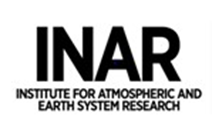Research
Focus-1: Aims of PEEX research agenda:
- To understand the Earth system and the influence of environmental and societal changes in pristine and industrialized Pan-Eurasian environments (system understanding).
- To determine the processes relevant to climate change, demographic development and use of energy resources in the Arctic-boreal regions (process understanding).
The PEEX research results are used for producing different types of scenarios on the impacts of climate change and air quality changes on human population, society, energy resources and capital flows. PEEX will provide information for mitigation and adaptation strategies for the changing Arctic environments and societies, and will also carry out risk analysis of both human activities and natural hazards (floods, forest fires, droughts, air pollution). These plans take into account different key aspects such as sustainable land use, public health and energy production. The improved knowledge and scenarios on climate phenomena and impacts are needed to provide enhanced climate predictions, and also to support adaptation measures. In particular, estimates of the type and frequency of extreme events, and possible nonlinear climate responses, are needed for both past, present and future conditions (PEEX Science Plan).
LARGE-SCALE RESEARCH QUESTIONS
LAND SYSTEM
Q-1 How could the land regions and processes that are especially sensitive to climate change be identified, and what are the best methods to analyze their responses?
Key topic: shifting of vegetation zones, Arctic greening
Q-2 How fast will permafrost thaw proceed, and how will it affect ecosystem processes and ecosystem-atmosphere feedbacks, including hydrology and greenhouse gas fluxes?
Key topic: risk areas of permafrost thawing
Q-3 What are the structural ecosystem changes and tipping points in the future evolution of the Pan-Eurasian ecosystem?
Key topic: Ecosystem structural changes
ATMOSPHERIC SYSTEM
Q-4 What are the critical atmospheric physical and chemical processes with large-scale climate implications in a northern context?
Key topic: atmospheric composition and chemistry
Q-5 What are the key feedbacks between air quality and climate at northern high latitudes and in China?
Key topic: urban air quality, megacities and changing PBL
Q-6 How will atmospheric dynamics (synoptic scale weather, boundary layer) change in the Arctic-boreal regions?
Key topic: weather and atmospheric circulation
AQUATIC SYSTEMS – THE ARCTIC OCEAN
Q-7 How will the extent and thickness of the Arctic sea ice and terrestrial snow cover change?
Key topic: The Arctic Ocean in the climate system
Q-8 What is the joint effect of Arctic warming, ocean freshening, pollution load and acidification on the Arctic marine ecosystem, primary production and carbon cycle?
Key topic: The Arctic maritime environment
Q-9 What is the future role of Arctic-boreal lakes, wetlands and large river systems, including thermokarst lakes and running waters of all size, in biogeochemical cycles, and how will these changes affect societies (livelihoods, agriculture, forestry, industry)?
Key topic: lakes, wetlands and large river systems in the Siberian region
ANTHROPOGENIC ACTIVITIES
Q-10 How will human actions such as land-use changes, energy production, the use of natural resources, changes in energy efficiency and the use of renewable energy sources influence further environmental changes in the region?
Key topic: Anthropogenic impact
Q-11 How do the changes in the physical, chemical and biological state of the different ecosystems, and the inland, water and coastal areas affect the economies and societies in the region, and vice versa?
Key topic: Environmental impact
Q-12 In which ways are populated areas vulnerable to climate change? How can their vulnerability be reduced and their adaptive capacities improved? What responses can be identified to mitigate and adapt to climate change?
Key topic: Natural hazards
FEEDBACKS – INTERACTIONS
Q-13 How will the changing cryospheric conditions and the consequent changes in ecosystems feed back to the Arctic climate system and weather, including the risk of natural hazards?
Q-14 What are the net effects of various feedback mechanisms on (i) land cover changes, (ii) photosynthetic activity, (iii) GHG exchange and BVOC emissions (iv) aerosol and cloud formation and radiative forcing ? How do these vary with climate change on regional and global scales?
Q-15 How are intensive urbanization processes changing the local and regional climate and environment?
Key topics: Atmospheric composition, biogeochemical cycles: water, C, N, P, S





